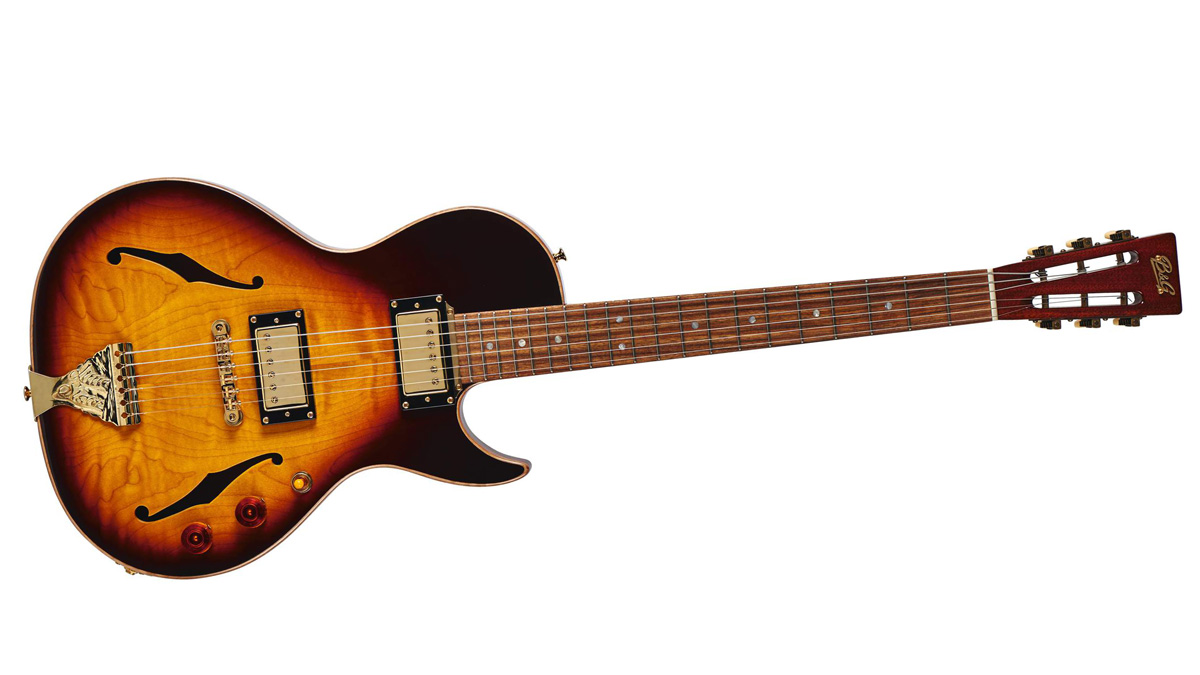MusicRadar Verdict
There’s more than a refreshing change here in that B&G is clearly drawing on different influences and not just offering us (yet) another shade of the Les Paul, SG, Strat or Telecaster.
Pros
- +
Smart build, working-man’s vibe, neck shape, lightweight, simple and classic sounds.
Cons
- -
The small fretwire or 14-fret neck won’t suit everybody, and there’s no shortage of retro-style semi-solids.
MusicRadar's got your back
The modern guitar market is an incredibly diverse place.
Along with the many brands that clone (and copy) a small number of classic designs there are plenty more operations, large and small, offering something a little different. And talking of different, while a non-cutaway electric with a 14-fret neck and a price veering close to £4k might seem niche, that’s exactly the premise of B&G’s original Israeli-made Little Sister.
Thankfully, to cater for us poverty- stricken wannabe blues and roots players, B&G now offers a Chinese-made version - in both non-cutaway and cutaway styles - aptly named the Crossroads.
Design
Lightweight, comfortable and unique certainly encapsulates the style here. The guitar has a Gibson-style scale length and a same cutaway outline that might have originated from a parlour style but remains very close to a slab-bodied first series Gibson Les Paul Junior or Special.
The bridge sits on the Little Sister’s body at 163mm from the centre of the tune-o-matic bridge to the base.
The Little Sister Crossroads features a one-piece quartersawn neck - albeit with the acoustic-style slotted and square-topped headstock. Meanwhile the body is a three- piece spread that’s exceptionally well jointed and hollowed, leaving a centre block under the bridge and pickups with plenty of air around it and, visibly, two small f-holes.
The maple top has slightly less flame with enough grain interest to keep it from being bland, while the natural edge appears thicker, the colour more scraped away on the top face with slightly more edge radius, too. The fingerboard here looks a little anaemic, with greyer pearloid dots, although the radius and frets are virtually identical - the frets have a similar width but are slightly lower.
Want all the hottest music and gear news, reviews, deals, features and more, direct to your inbox? Sign up here.

The tune-o-matic, along with the pickup covers, are gold-plated, while the smaller tailpiece and slightly less fancy jack plate appear to be lacquered brass. The three-on-a-strip tuners have what looks like aged-brass metal parts with cream buttons. Even the small metal control indictors are replicated here. The major difference are the twin humbuckers, along with Korean 500k pots and a small cap wired in modern style. The finish is classed as UV and appears slightly more plasticky.
Sounds
The neck has what B&G calls a ‘soft V profile’ that, with a contemporary comparison, is not a million miles away from PRS’s original ‘wide fat’ shape, sharing a similar depth, virtually identical nut width and string spacing that becomes subtly more flared as it meets the body. It’s a little more V’d along its length, which continues into the boat bow heel. The 14-fret Crossroads is similar, although it rounds out a little more; the heel is more rounded and the V is less pronounced (and even more ‘wide fat’, if we’re honest).
The Little Sister features a small width fretwire, which adds to the old-school feel. The single action truss rod (access to which is under a cover plate between the neck pickup and the end of the fingerboard) “requires a smaller channel in the neck, which means there is more wood which all helps with the sustain and the tone you hear,” says B&G’s Avi Goldfinger. “When you install it with enough tension you can play with it both ways.”
Plugging in the Crossroads, there’s a vintage output vibe that - although we missed individual pickup controls - makes for a hugely useable voice. On cleaner tones the semi-solid nature seems to pull back the ‘sting’ of a solidbody creating a softer, more centre-blocked, ES-style voice with plenty of width and snap. Yes, the 14-fret neck does feel a little compromised but we’re having too much fun to notice.
Aesthetics aside, this one drops right into early rootsy electric blues and it’s a seriously good slide guitar, too. As we move onto grittier amp voices, there’s a really fruity sweet spot, although go too far and that softness turns to a mushy, less distinct voice than an equivalent solidbody with similar-style ’buckers. With lower gains, on the edge of crunch and boosted clean amp voices... well, we’re having a ball.
There’s more than a refreshing change here in that B&G is clearly drawing on different influences and not just offering us (yet) another shade of the Les Paul, SG, Strat or Telecaster. Their vision imagines a different genesis of the electric guitar and for many roots players (or acoustic players wanting to go electric), the Little Sister will fit the bill perfectly, not least in this relatively affordable Crossroads guise.
Dave Burrluck is one of the world’s most experienced guitar journalists, who started writing back in the '80s for International Musician and Recording World, co-founded The Guitar Magazine and has been the Gear Reviews Editor of Guitarist magazine for the past two decades. Along the way, Dave has been the sole author of The PRS Guitar Book and The Player's Guide to Guitar Maintenance as well as contributing to numerous other books on the electric guitar. Dave is an active gigging and recording musician and still finds time to make, repair and mod guitars, not least for Guitarist’s The Mod Squad.

